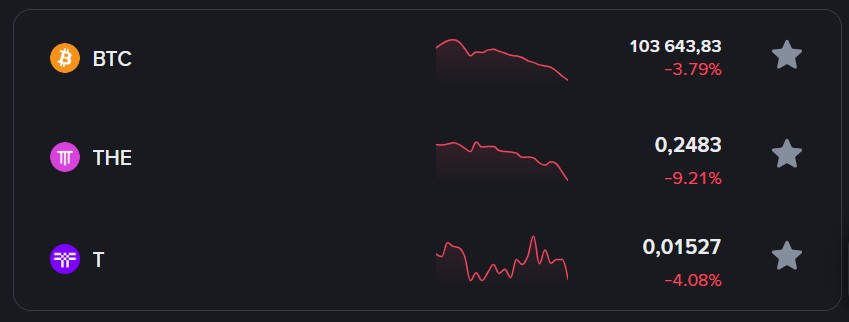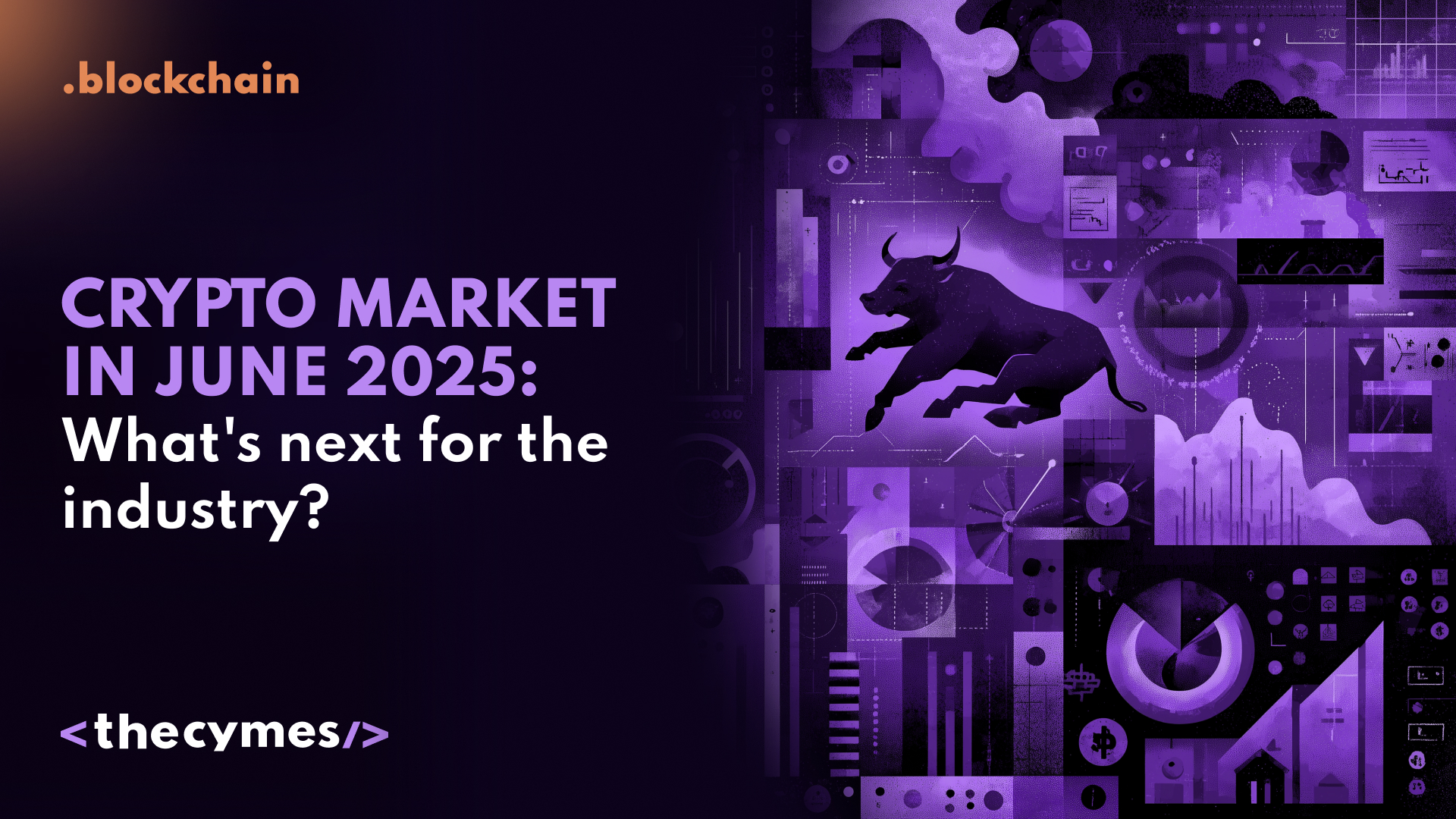Table of Content
Crypto market in June 2025: What's next for the industry?
/>Explore the key trends shaping the crypto market in June 2025 — from Bitcoin's stability to Binance's latest moves and what lies ahead for altcoins and AI tokens.Crypto in June 2025: Bullish markets, Binance moves, and industry signals
The crypto market in June 2025 was confirmation that the spring optimism was no fluke. Against the backdrop of Bitcoin's revival, growing interest in AI tokens, and the activity of institutional investors, many traders and holders felt a return of confidence. However, behind the numbers and charts, numerous other interesting processes are at play: changing exchange strategies, structural changes in regulation, and infrastructure development.
In this article, we provide a detailed examination of the key trends for mid-2025, focusing on current market influences and potential future developments.
What's going on with Bitcoin?
Bitcoin is holding steady above the $100,000 mark. This psychological boundary has become the new normal rather than a blip. There are several reasons for this: an influx of institutional money through ETF products, a resurgence of retail interest, and a generally positive macroeconomic backdrop.
Funds such as BlackRock and Fidelity have continued to build their positions. As of June 2025, cumulative investments by institutional players through SEC-approved bitcoin ETFs stand at over 1.5 million BTC. By comparison, this figure was almost half of what it was a year ago.
At the same time, the number of bitcoins held on exchanges continues to decline. This means that investors prefer to have the asset for the long term rather than speculate. This shift in behaviour often precedes new upward spurts, as was the case in 2020-2021.
According to CoinMarketCap, the total cryptocurrency market capitalisation currently stands at $3.27 trillion, down 0.26% in the last 24 hours.
Bitcoin (BTC) has traded between $104,300 and $106,129 in the last 24 hours. As of 09:30 (UTC) today, BTC is at $104,928, down 0.08% from its previous value.
Most major cryptocurrencies by market capitalisation are showing mixed dynamics. The leaders of growth are tokens T, THE, and ARPA, which have risen in price by 27%, 9%, and 9%, respectively.

Image from Binance
What is Binance doing?
Binance, despite a challenging 2023-2024 year with regulatory pressure and leadership changes, continues to prove its ability to adapt and move forward. June 2025 confirmed that the platform is not just holding its ground, but also trying to redefine its role as a centralized exchange in the Web3 ecosystem.
One of the key steps was the launch of the Copy Trading feature on the Binance Futures platform. This solution is primarily aimed at novice users who struggle to understand charts and tactics independently. Now, they can track the trades of experienced traders in real-time and automatically replicate their actions. This approach lowers the entry threshold and makes complex strategies accessible to most people. But more importantly, it's not just a ‘feature for the sake of a feature’. For Binance, it's a way to retain new users and give them their first experience without the fear of losing everything in the first few weeks.
At the same time, the exchange is betting on tokenised products and strengthening Megadrop, its early access platform for promising Web3 projects. Participants have the opportunity not only to follow new launches, but also to become part of the community from the very beginning, receiving token allocations for their activity and task fulfillment. Against the backdrop of an overheated market with dozens of useless memes and speculative coins, Megadrop becomes a filter of sorts.
In addition, the exchange is increasingly focusing on generative AI and crypto infrastructure. The number of AI tokens is growing on the platform, which are customised for storing, learning, and transmitting data in distributed networks. Educational initiatives are being launched around this topic. Binance explains how blockchain, smart contracts, and neural networks are interconnected, why Web3 tools require computing power, and how investors can utilize it. In this way, the exchange does not just add tokens to the listing - it creates a context in which these tokens can exist and develop.
What is happening to altcoins?
As of 17 June 2025, the altcoin market remains heterogeneous. Some projects are showing growth on the back of local interest and news, while others are stagnating or have reverted to pre-spring levels after the rally. Investors who entered the market in the spring on a high now observe a fragmented picture: some assets are in the ‘green zone’, while others have fallen into negative territory and have not yet recovered.
Tokens from the AI segment continue to hold attention, especially those related to infrastructure and computational tasks. Projects related to model training, data storage, and generative agents continue to drive high trading volumes. In particular, tokens like FET, AGIX, and GRT remain among the most discussed, despite their volatility.
There is no clear dominance in the L2 solutions on Ethereum. Polygon and Arbitrum periodically return to the top of discussions, but there is no global trend of liquidity flow to L2. Many analysts note that investors' attention is shifting towards narrower use-cases, for example, custom chains for gaming or AI.
Gaming tokens are also going through a mixed period. Despite increased activity in meta-universes and the emergence of new Web3 games, game project coins often struggle to keep pace with user metrics. This is because monetisation models remain unstable and speculative interest subsides after listing.
Meanwhile, the ‘old boys’ of the market—such as Solana, Avalanche, or Near—are showing subdued growth. These assets are still perceived as ‘infrastructural’ and are most often targeted by institutional investors. However, without strong news or strategic updates, there have been no sharp jumps yet.
The general picture is as follows: against the background of Bitcoin's relative stabilization, altcoins are not so much following the market as responding to local drivers, such as news, partnerships, listings, and announcements. Buyers have become more cautious. And instead of mindless FOMO, the choice is increasingly working: why this token, what's behind it, and whether it has a chance to stay on trend for at least a quarter.
Chainlink is actively promoting its CCIP (Cross-Chain Interoperability Protocol), one of the pillars of future network interoperability.
Regulatory backdrop: The fog is clearing
In June, the European Commission confirmed that MiCA will be implemented in stages. This creates room for companies that comply with the rules and are willing to be transparent. In the US, the crackdown on some platforms continues, but with the SEC approving another ETF product and the courts increasingly siding with the industry.
Major banks are starting to launch their digital assets, albeit in test mode for now. This is not ‘mass acceptance’, but it is a clear signal that the industry is moving from a peripheral to a systemic role.

Image by Bitrefill
What's next?
If you've been watching the market and waiting for ‘it will be clear’ - the moment is now. Crypto is regaining focus, not as a game for enthusiasts, but as a practical tool for investors, developers, and companies.
In the coming months, you should keep an eye on:
- actions of significant funds and corporations;
- new approaches to launching tokens through platforms like Megadrop;
- technological development of blockchains at the level of Ethereum and Solana;
- AI and blockchain are already transitioning from theory to practice.




